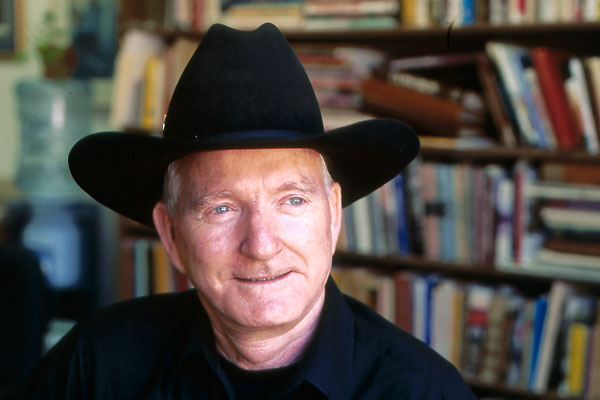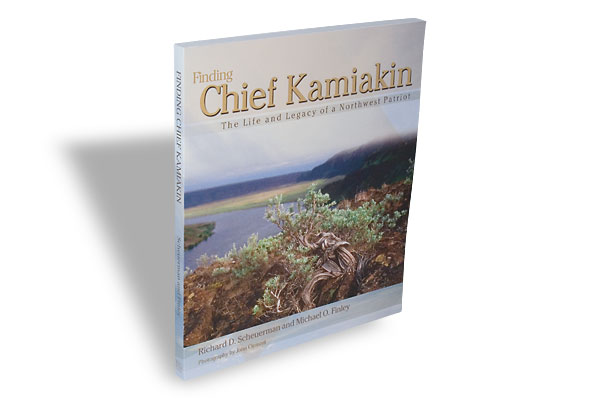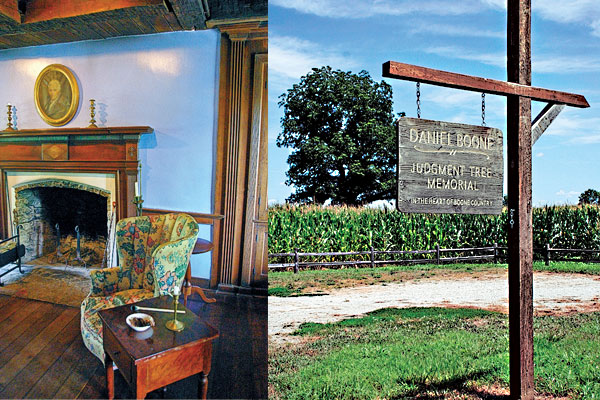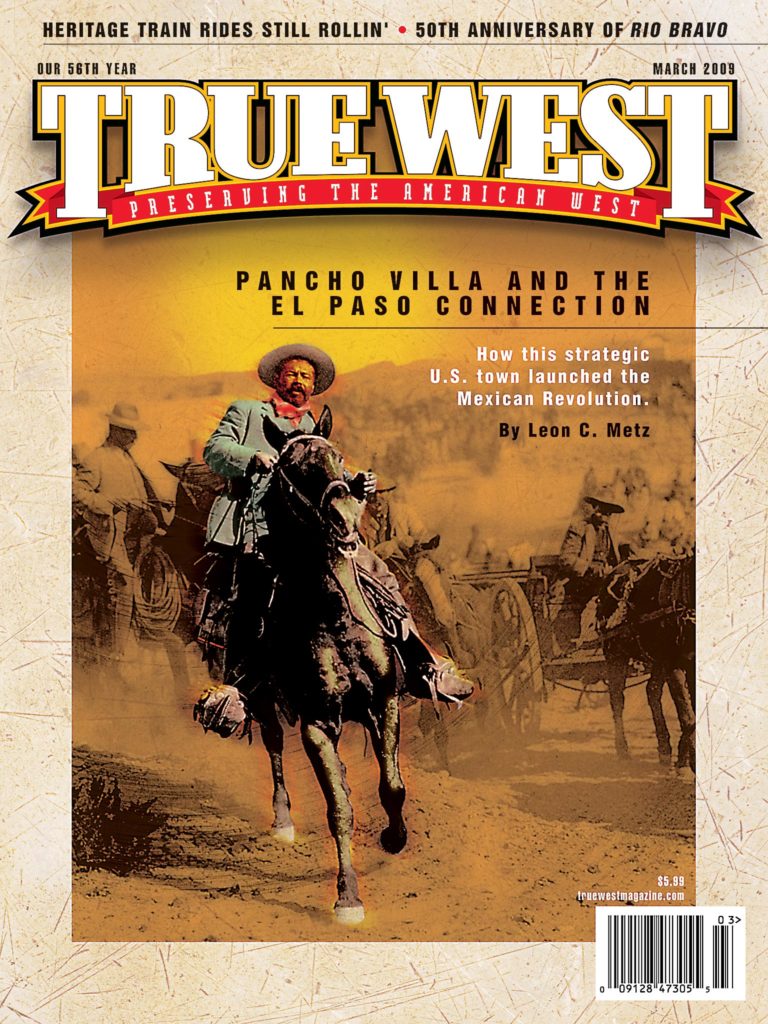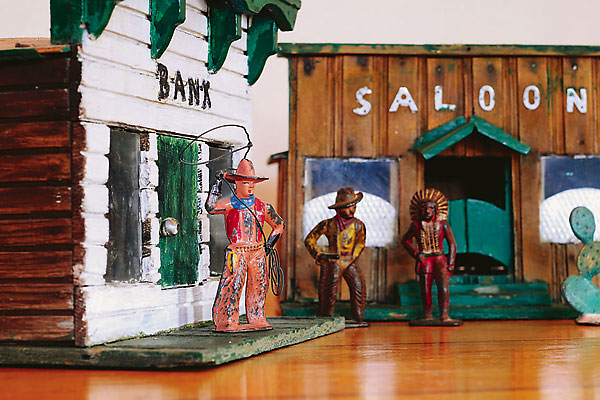
His family had no air conditioning, so as a youngster, Ed Mell escaped the summer heat of Phoenix by visiting his grandfather at a cabin, built in 1931, near Prescott, Arizona.
The property was a retreat. For most of the last two decades, a home Mell had built on inherited land and adjacent property he purchased, has been one as well.
A tall building with a pitched roof found on the grandfather’s property served as inspiration for architect John Chonka’s design of Mell’s cabin. The cabin doubles as a summer studio, where the 66-year-old artist can paint small study images to prepare for the creation of larger paintings that he will generate in his Phoenix studio.
With styling taken from the work of legendary architect Frank Lloyd Wright, the home/studio was built in 1991 and is adjacent to the property Ed’s grandfather owned. Besides being a “place where I spent a lot of time in my youth,” the property is a respite from the hustle-bustle and heat, he says.
“My leanings toward architecture are very simplistic and angular,” Mell says, “which probably has something to do with my whole aesthetics.”
Mell’s Prescott-area home has a bank of front windows 18 feet long and seven feet high that give him a sweeping view of the area. “From that vantage point—it sits up on a hill—I can watch the storms go by.”
Cloud banks and waves of rain sweeping over the land are inspiration for Mell’s paintings, which are recognized for their angular mountains and clouds, bolts of lightning and other geometrically-shaped landscape features. “The summer storms that roll in out of Mexico, the monsoons that roll in to Arizona, are pretty spectacular, so it is a great vantage point,” he says.
Balancing the big windows is a stark cement block fireplace that not only adds strength to the home, but also reflects Ed’s leanings toward basic shapes. Open and inviting, the living and dining areas are seasoned with small studies of his work. On the only true wall in the living area are Afternoon Shadows, Coal Mine Canyon and Towering Walls, Lake Powell, hanging below large triangular windows. Two smaller square windows add further angularity to the wall, one filled with a small folk art horse. Additional folk art graces counters and the mantle over the fireplace.
In the dining area, above the table, is a bucking horse oil-on-board painting by Lon Megargee created circa 1935. More of Ed’s work hangs on adjacent walls.
The walls, painted a very soft white with a little warm grey added to it, give the place a sense of quiet solitude and cohesion with the artwork on the walls. “I just wanted to keep the softness to it,” Ed says. The neutral color is particularly important in his studio, so it does not affect the images he paints.
Even the most uninformed viewer of Mell’s art will be immediately struck by his paintings; images with sharp edges and vibrant colors. Storm clouds, massive mountains and bright skies remain the dominant features.
While Mell began his art career as an illustrator in New York (having earned degrees from Phoenix Junior College in Arizona and the Art Center College of Design in Los Angeles, California), he left that rat race for a summer teaching silk screening and drawing on the Hopi Reservation at Hotevilla, Arizona, and quickly decided New York would be part of his past. So he returned to Phoenix and began an illustration business with his younger brother, but he soon found himself using his colored pencils to sketch landscapes. Since 1978, he has concentrated on oil paintings, and while his landscapes are signature, he has also painted other Southwestern subjects: cactus, cowboys, cattle and horses. He has sculpted in bronze, retaining sharp corners in the hard medium, such as in his rendition of a bucking bronc and rider, Jackknife.
Just as Ed Mell spent time at his grandfather’s home in this area, so too, does his own family come to visit him at the family cabin. He’s invited artist friends as well, including his former studio partner, True West Executive Editor Bob Boze Bell, whom Ed says has been a mentor to his artist son Carson. Often the two men with their similar last names—Mell and Bell—share time at the cabin (just as they once shared a studio), where they bond with their sons, Carson and Tommy, beneath a neon sign of what was once the state’s largest selling beer, Arizona Brewing Company’s flagship brand, A-1.
Similar local heritage touches, like the Pilsner sign, found throughout Mell’s cabin unpretentiously reveal his appreciation of his home state. He’s not an artist who has run away from home, but one who rather embraces it.


